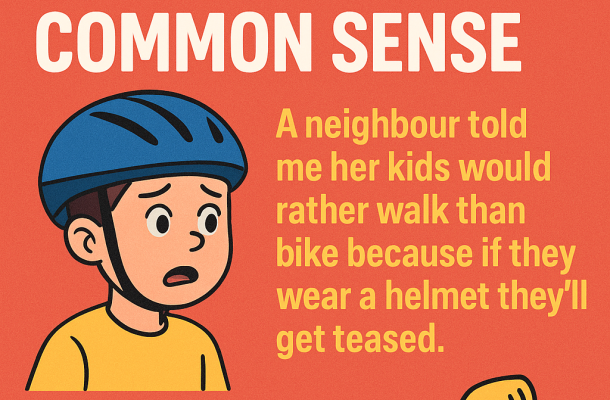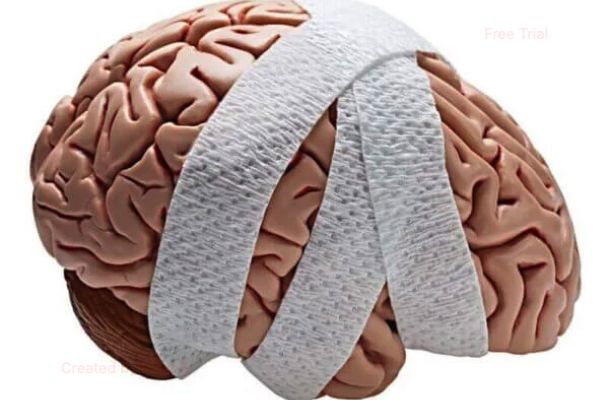“I Am BrainSTRONG” will be a much-needed Paradigm Shift
On January 15, 2026 a press conference will be held that will mark the beginning of something powerful — changing the way people think about helmet safety. Special guests from the world of professional hockey, including some familiar NHL faces, will be joining us to help launch I Am BrainSTRONG — a program that’s all about flipping the script on helmet use. Just like the NHL did back in 1979 when they made helmets mandatory, this initiative aims to drive a culture shift. But here’s the catch: unlike hockey, there are no referees on city streets to make sure kids (or adults) wear a helmet when biking. That decision? It’s entirely up to us.
That’s why I Am BrainSTRONG will exist.
We’re not just handing out helmets and hoping they get worn. We’re not putting up rules and hoping people follow them. We’re creating a movement—one that helps kids (and the adults around them) want to wear a helmet, instead of feeling like they have to.
A Look Back at the NHL: What It Can Teach Us
Rewind to 1979. The NHL—after years of resistance—finally mandated that all new players entering the league wear helmets. Veterans were allowed to opt out (grandfathered in), and some did. But as time went on, more and more players recognized the value in protecting their heads. The initial push was met with reluctance, even mockery. But now? Not a single NHL player would dream of stepping onto the ice without a helmet.
The change wasn’t just in the rulebook—it was in mindset. And it worked.
That’s the model I Am BrainSTRONG is taking inspiration from. But without referees or penalties, what must happen will be even bigger. We’re trying to make helmet safety a personal identity choice, not just a safety one. Something that starts from within, and spreads outward.
The Real World Has No Referees
When you’re biking on the road, there’s no whistle-blowing official to stop you and say, “Put your helmet on.” There’s no penalty box for ignoring safety. The consequences are far worse. An impact to the head from a fall or a collision with a vehicle can cause life-altering injuries in seconds. Some of them are visible. Many are not.
And that’s the point.
Most acquired brain injuries (ABIs) are invisible. There’s no cast, no scar, no obvious sign. But they change lives permanently. They affect memory, mood, mobility, and the very essence of who a person is. And unlike a bad haircut or scraped knee, these injuries don’t grow out or fade away. They’re with you for life.
So what are we waiting for? A referee to make it official? A new law? Or worse, a personal tragedy to make us realize what’s at stake?
Why “Hindsight is 20/20” won’t matter
We’ve all heard the phrase “hindsight is 20/20.” It’s what people say after they’ve made a mistake they wish they could take back. But for someone who’s suffered a serious brain injury after falling off a bike without a helmet, hindsight isn’t helpful. It’s cruel, because once it happens, you can’t rewind the clock.
That’s why we’re inviting everyone—especially kids—to make the choice before anything happens. To say proudly:
“My name is [first name], I live in [city, province], and I’ll wear my helmet when biking—because I am BrainSTRONG!”
The intent is that it’s more than just a pledge, it’s a change in mindset. And it’s one we want to spread across schools, cycling clubs, neighbourhoods, and eventually, across the world.
The January Press Conference: A Turning Point
In January, when we hold our press conference, it won’t just be another event. It’ll be a launchpad. NHL players—who know firsthand the impact of invisible injuries—will be there to lend their voices, their stories, and their star power to help amplify our message.
They’ll share what it was like to see the NHL shift toward safety. They’ll talk about concussions and head trauma, and how their lives (and careers) have been changed by injuries most people never see. And they’ll help underline the urgency of helmet safety outside the rink, where the stakes are just as high, if not higher.
A New Kind of Cool
Let’s face it—some kids don’t want to wear helmets because they don’t think it’s cool. That’s what we’re here to change. Being BrainSTRONG means being proud of protecting your brain. It means standing tall and saying, “I made the smart choice. I choose safety. I choose me.”
It’s not about fear—it’s about identity. Just like a jersey shows your team, your helmet shows you’re BrainSTRONG.
Join Us
So as we look ahead to the press conference, we hope you’ll join us in spirit—or in person—and help us take the next step in changing the way the world sees helmets.
This isn’t just about protection. It’s about prevention. It’s about empowerment. It’s about choosing now, because hindsight won’t help later.
Let’s be BrainSTRONG together.
👉 Read more about what will be launched and register your interest and be the first to hear when the program launches.
Comments (3)
Leave a Reply Cancel reply
This site uses Akismet to reduce spam. Learn how your comment data is processed.


Well put Robert I’m very interested in this living in Toronto I see so many people with no helmets whether on bicycles, scooters or even motorcycles and some say it’s because of religious reasons. I’m sorry but a turban will not protect your head from serious injury if you fall or get into an accident.
I’d not thought that, thank you for pointing it out, however in 1996 the Ontario government passed “Bill 194, Highway Traffic Amendment Act (Helmet Exemption for Sikh Motorcyclists)” making it legal for a Sikh person to ride a motorcycle with a helmet. What I post about is making the choice to wear a helmet, but I only thought of non-Sikh people. The choice to wear a helmet with hair that’s short enough that wearing one is easy is what I’d talked about, however and some Sikhs have waist length hair which they tie-up and they cannot wear helmets on that, which means that it’s not something that physically can be done.
More research. Neither of us know too much about turbans, what they’re made of, nor how much material is involved in one, but from this study they found that turbans greatly reduced the risk of skull fractures in areas covered with a thick layer of fabric, compared to bare heads. Also, the style of the turban greatly affected the risk of head injury. A brain injury is complicated, because why it’s often invisible is that the damage occurs from the brain hitting the skull, which a helmet won’t protect against. I found from this article:
They found that turbans greatly reduced the risk of skull fractures in areas covered with a thick layer of fabric, compared to bare heads. Also, the style of the turban greatly affected the risk of head injury.
https://tinyurl.com/23yfuzpb